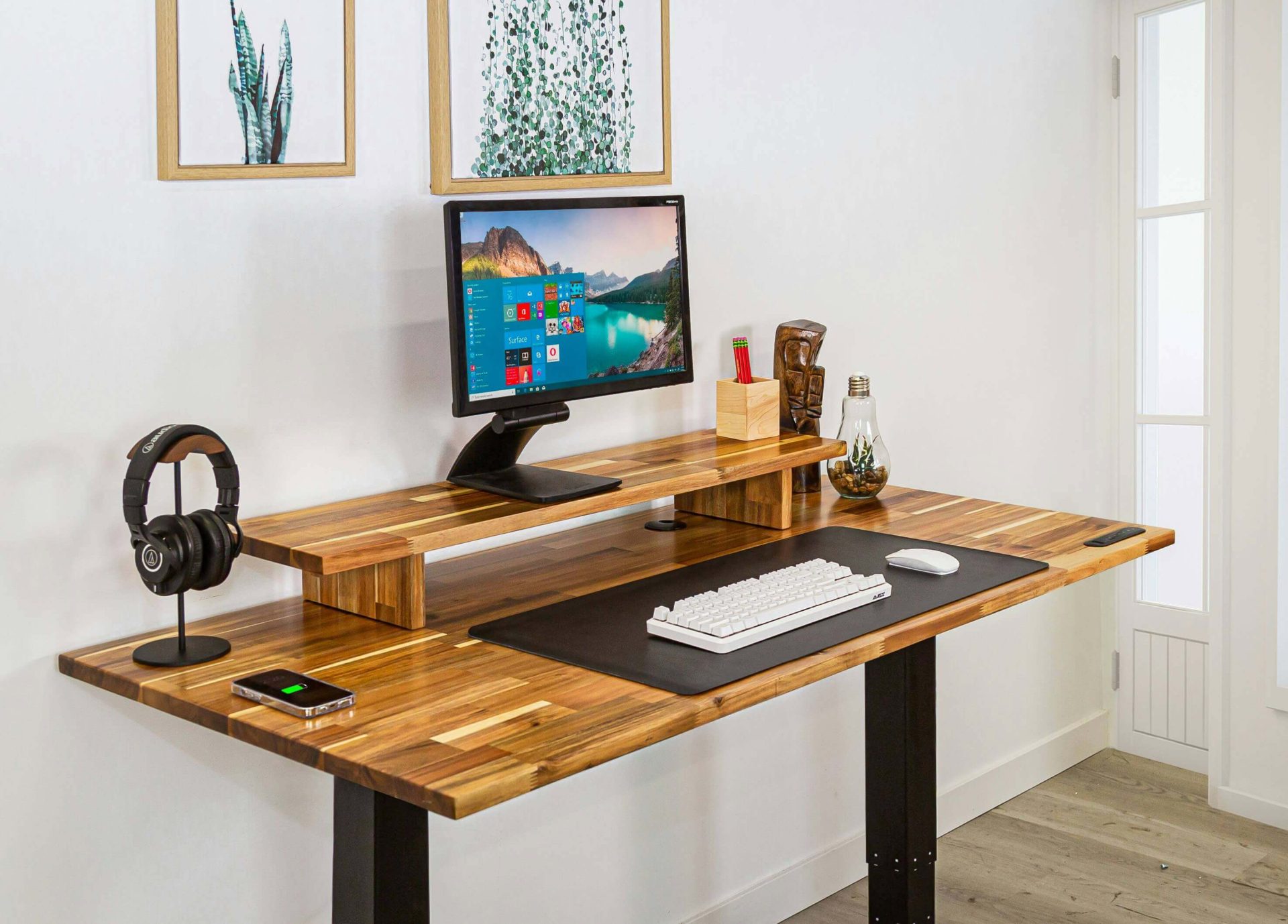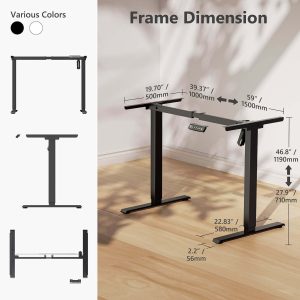Imagine a workspace that adapts to your body, not the other way around. A “height adjustable desk” paired with an “ergonomic chair” isn’t just about comfort—it’s a game changer. These two elements combine in a way that allows you to move, shift, and adjust as needed throughout the day. And when done right? You’ll feel less pain, more energy, and boost your productivity to a whole new level.
Let’s break down why this powerful combo is crucial for modern work habits.
Ergonomics: The Key to Better Health and Productivity
Ergonomics, simply put, is the science of designing a workspace that fits the human body. When your desk, chair, and monitor all align with your natural posture, you feel more comfortable. And comfort isn’t just about luxury; it’s about reducing strain, preventing injury, and keeping your energy levels high. The effects of poor ergonomics? Back pain, stiffness, headaches, and fatigue. That’s a recipe for lost productivity.
Here’s the catch: sitting for hours on end can lead to serious health problems. But standing too long isn’t any better. The real magic lies in movement—the ability to alternate between sitting and standing. And that’s where the “height adjustable desk” shines.
Height Adjustable Desk: Flexibility at Your Fingertips
A “height adjustable desk” is more than a trend. It’s a tool that allows you to effortlessly switch between sitting and standing. Why does that matter? Well, when you sit for too long, your muscles get stiff, circulation slows down, and your posture goes out the window. When you stand for too long, your joints start to ache, and your feet begin to feel the strain.
The beauty of a “height adjustable desk” is its ability to break this cycle. With a simple adjustment, you can stand for a while, get the blood flowing, stretch your legs, and then sit back down without skipping a beat. Studies have shown that alternating between sitting and standing throughout the day improves circulation, reduces back pain, and keeps your mind sharp. It’s like hitting a refresh button for your body—and your work.
Ergonomic Chair: The Perfect Sitting Solution
Now, let’s talk about that ergonomic chair. An adjustable chair that fits your body is a must-have. Why? Because when you sit, your body needs support. The right chair isn’t just a seat—it’s a tool that keeps your spine aligned, your shoulders relaxed, and your wrists comfortable.
The magic happens in the details. The **lumbar support** in an ergonomic chair helps maintain the natural curve of your lower back. This simple feature prevents slouching and reduces pressure on your spine. But it doesn’t stop there. The seat depth and width matter, too. If your seat is too deep or too narrow, it can cause discomfort and disrupt circulation. You want a seat that lets you sit back comfortably while your feet stay flat on the floor.
Don’t forget the armrests! They should be adjustable, letting your arms rest at a 90-degree angle. This minimizes strain on your shoulders and wrists. An ergonomic chair also adjusts in height, so your knees stay at a 90-degree angle with your feet flat on the ground.
But here’s the thing: the ergonomic chair isn’t a standalone solution. It’s the perfect complement to your **height adjustable desk**. The two work together to create a flexible, comfortable, and healthy work environment.
How to Combine Your Ergonomic Chair with a Height Adjustable Desk
Now, let’s talk setup. You’ve got the tools, but the trick is to set them up correctly.
1. Find the Right Desk Height for Sitting
First, when you’re sitting, the desk should be at a height that allows you to keep your elbows at 90 degrees. Your forearms should rest comfortably on the desk, not stretched forward. Your feet should be flat on the floor, and your knees should form a 90-degree angle. Adjust your **ergonomic chair** so that your back is fully supported, and your thighs are parallel to the ground.
2. Adjust for Standing
When you stand, the desk should be at a height where your elbows are still at a 90-degree angle. Your wrists should remain neutral, not bent. Stand tall, not hunched, with your weight evenly distributed across both feet. Keep your knees slightly bent, and don’t lock them. The key is to maintain a neutral posture—no slouching or leaning forward.
3. Switch Between Sitting and Standing
The whole point of the “height adjustable desk” is flexibility. You don’t have to stay seated all day, nor do you have to stand for hours on end. Set a timer to remind yourself to alternate positions every 30 minutes to an hour. This keeps your body moving, your muscles engaged, and your circulation flowing.
4. Focus on Posture
Whether sitting or standing, posture is everything. When you’re seated, make sure your back is supported by the lumbar feature in your chair. Don’t slouch! Keep your shoulders relaxed and your arms at a 90-degree angle. When standing, engage your core, keep your spine neutral, and make sure your weight is evenly distributed.
5. Take Breaks and Move
Even with the best setup, your body needs regular movement. Stretch, walk around, or simply change positions every once in a while. A good ergonomic chair and “height adjustable desk” can only do so much. Your body thrives on variety, so keep it moving.
Why You Need This Combination
By combining an “ergonomic chair” with a “height adjustable desk”, you’re creating a workspace that supports your body at every angle. This combination offers a variety of health benefits:
– Improved Posture: Both the chair and desk work together to keep your spine aligned, preventing slouching and back pain.
– Reduced Pain and Discomfort: Alternating between sitting and standing reduces pressure on your muscles and joints, alleviating pain and stiffness.
– Increased Productivity: When you’re comfortable, you can focus better. This setup helps you stay energized, which leads to improved focus and efficiency.
– Better Circulation: Standing regularly promotes blood flow, reducing the risk of circulatory issues linked to prolonged sitting.
The Bottom Line
It’s simple: sitting all day is bad. Standing all day is just as bad. But when you alternate, supported by an “ergonomic chair” and a “height adjustable desk”, your body gets what it needs. More comfort. Less pain. Better posture. The combination allows you to stay comfortable and productive throughout the day.
So don’t settle for the old “sit and suffer” routine. Take control of your workspace. Get an ergonomic chair, set your **height adjustable desk** up right, and switch things up. Your body—and your productivity—will thank you.


